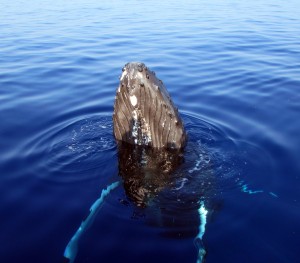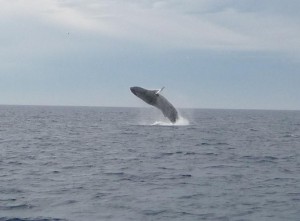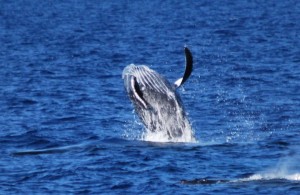Aloha,
As predicted, the surf was HUGE on the west side of the island on Thursday, causing us to cancel all of our charters. Since the closer to shore you get, the more you feel the water movement, it made me wonder how the Humpbacks handle high surf days. Do they move out to sea to avoid the surge?
Throughout my career as a whale naturalist, I’ve been on lots of cruises where the swell has been up. Though I’ve never been officially involved in a study tracking the movement of the whales, I have noticed anecdotally that we have to go further from shore to find the Humpbacks on big surf days. But those observations aren’t scientifically valid ones.
So, I spent some time looking through published research to see if anyone else has observed and documented this correlation.
A scan of the literature didn’t help me much with this question…but I did find recently published research that found that calves are more likely to play around on the surface when it’s rough than when it’s calm (they may get excited by all the wave action and want to see what it feels like)…and that male calves surface without mom more frequently than female calves, and stay on the surface longer. Since surface play may help to build muscles and increase myoglobin (which helps with oxygen storage so the whales can go longer between breaths), these young males might actually be preparing themselves for the different social life they’ll live when they grow up.
I also found other recently published research where the researchers found that Humpbacks switched from primarily vocal to primarily surface generated communication (breaching/peduncle throwing etc) in rougher oceans — they posited that the sound from a big splash travels across greater frequencies and therefore might be more easily detected by other Humpbacks in a noisy environment.
I’m still searching for research about whether Humpbacks are affected by the surf…if you find anything, please send it my way!
Have a great weekend. I’ll send out our Weekend Recap on Monday.
Mahalo,
Claire



